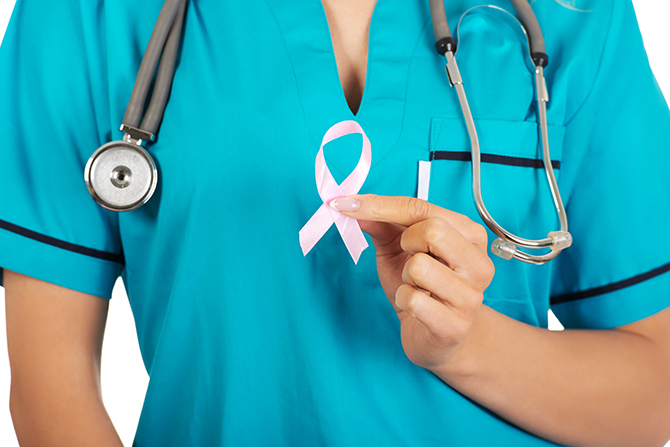In honor of Breast Cancer Awareness Month, we wanted to talk about breast cancer during the pregnancy experience – from prenatal care through postpartum and breastfeeding. With so many changes going on in their bodies, it can be easy for your patients to mistake a possibly pre-cancerous lump for simple hormone-related breast changes. Even though breast cancer during pregnancy and breastfeeding is rare, it can occur. But your patients should be aware that it can also be treated during pregnancy and lactation. Educating your patients can alleviate some of the fear of the unknown about diagnosing and treating breast cancer that occurs during pregnancy or the first postpartum year.
Start by talking to your patients early in their pregnancy care about breast changes. The better a woman knows her own breasts, the more likely she is to notice irregularities. When you educate patients about what breast changes to expect, they may have a better idea of what is typical – smooth lumps vs. hard, irregularly shaped ones. Breasts continue to change during lactation, and women need to continue to be aware of irregularities. Breastfeeding education should include the information that breastfeeding mothers lower their risk of pre- and post-menopausal breast cancer. It can also help lower the risk of ovarian cancer.
Your clients should also know that ultrasounds and mammograms are considered safe diagnostic tests during pregnancy. With no radiation concerns, ultrasounds are generally the first choice for diagnostic testing. During mammograms, an abdominal shield protects the baby (in any trimester) from the minimal amount of radiation exposure. There are a few other diagnostic tests, but most expose the patient (and possibly the baby) to some amount of radiation.
Now that more women are getting pregnant at later ages, they need to be aware that mammograms can and should continue to be done while they are pregnant and lactating. Over the course of pregnancy and lactation, it’s possible a woman could miss out on multiple mammograms, if she neglects to do them during that period.
If a suspicious lump is found, a needle or surgical biopsy can determine whether a breast lump or change is truly cancer, and a treatment plan can be put together. Chemotherapy, surgery, radiation and other targeted treatments are possibilities based on the cancer and where the patient is in her pregnancy. The treatment team will weigh what’s best for the mother AND what’s best for the baby.
One of the biggest concerns a patient may have is whether breast cancer can spread to her unborn child. You can reassure her that there are no known cases of this happening. A couple of rare cases have seen the cancer reach the placenta, which could affect the nutrition the baby is receiving from the mother.
While breast cancer during pregnancy and breastfeeding is rare, that doesn’t mean you shouldn’t address the reality that it can happen. Having even a basic idea about diagnosis and treatment options can increase your patients’ confidence that if cancer were to occur, it doesn’t mean it has to be the end of a pregnancy or the inability to breastfeed (in most cases).



